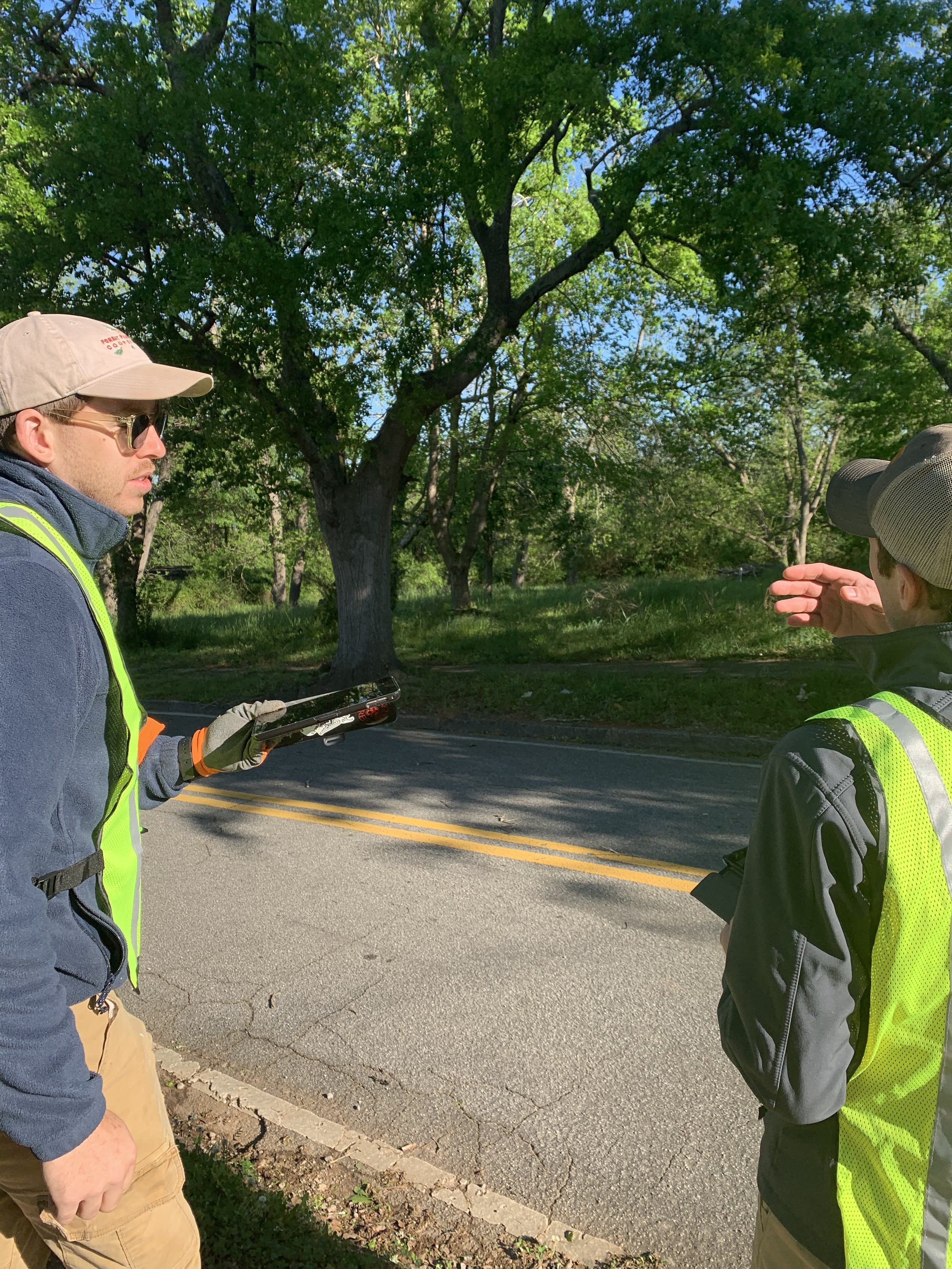What is a Tree Inventory?
New Urban Forestry recently conducted tree inventories for two very different purposes. The first was for the zip line route at the Sandbar, a local business that provides a zip line tour across the Broad River. We also spent a great day in the Historic Downtown area of Greensboro, GA recording trees along the streetscape. The Sandbar and Downtown Greensboro are great examples of two unique places that benefit from a tree inventory and tree management plan.
One view of the inventory at the Sandbar in Bowman Georgia.
The Sandbar opened it’s zipline course 4 years ago after a decade of offering kayaking on the Broad. The ziplines zig zag back and forth across a river tributary onto platforms in the trees. It’s a beautiful way to experience the landscape. From an arborist’s perspective, attaching hardware to trees creates some unique challenges. What happens if the tree dies? In the case of The Sandbar, losing one of the trees critical to the zip line course would effectively shut down the business. Choosing the right trees to begin with, ones that are healthy and low risk, is a great place to start, but regular inspection is also important. Putting the trees on a maintenance plan is best practice and reduces the risk of a failure.
Downtown Greensboro presents a separate set of challenges. Most of the trees that line the streets are well established and would be costly and challenging to replace. The trees shade sidewalks, parking spaces, buildings and the street. If a tree or large branch were to fall, there is a chance it could injure a car, a building or a person.
Before developing a maintenance plan, we first gather basic information about the trees: location, size, species, and overall health are assessed.
After “walking” the Sandbar property with the owner, we were able to create a map of the various trees that are being used to support the zip line cables. There are 24 trees total supporting and surrounding the system. Several of the trees surrounding or close to the cables also need attention because they could potentially pose a threat to the system by dropping limbs, interrupting the line, or falling into a platform. Consequently, our most common recommendations involved pruning to remove dead limbs and to reduce the size of over-extended lateral branches
Our most common recommendation for the trees in Greensboro is a “crown clean”, pruning to remove dead or broken branches. Additionally, these trees (and most urban trees) would also greatly benefit from soil care. In busy downtown areas, trees generally have very limited soil volume available for root growth. The nutrients that we inject into the soil can replace some of those that are lost when leaves are removed from the site.
Art and Ryan discuss a tree in downtown Greensboro.
A tree inventory is a great way to evaluate a large number of trees. It can make it easier to manage a large project, keep track of the services that are necessary and prioritize plant health treatments. An inventory can be used as a reminder to check back on particular trees that could be have potential for failure.
An inventory is a great opportunity for places like the Sandbar or Greensboro to ensure many years of adventure on their zipline course, or a beautiful downtown streetscape, but is only an example of who can benefit from this service. Municipalities, schools and universities, apartment complexes, golf courses, and any other properties with foot traffic, buildings and trees should consider this as part of their annual maintenance plan.






